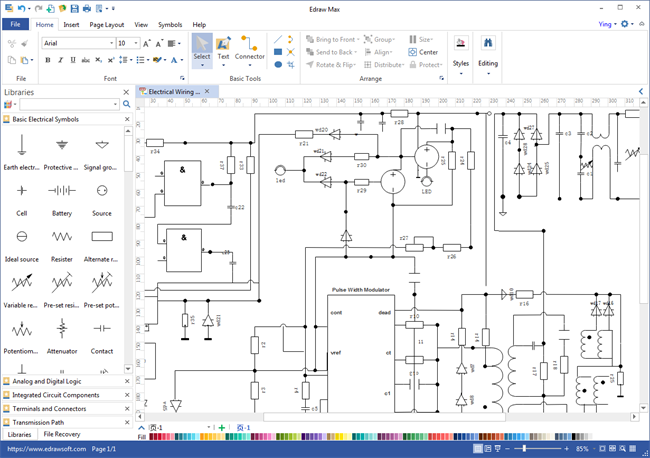Technical Activities, Functional Activities
Preventing overvoltage to guarantee aircraft system reliability and personal security
Among many other very sensitive activities, AYES is in charge of developing electronic systems both for the aerospace and defense industry.
Nowadays, electronic systems represent a very significant part of current aircraft design. Hardware engineering combined with the continuous development of complex embedded programming lead to breakthrough innovations improving both the aircraft technical characteristics as well as the personal security onboard.
I recently had the opportunity to work on one of these projects, contributing to the design, development and testing of critical embedded software destined to equip airplanes and helicopters.
One concrete application I worked on was the overvoltage and overcurrent control system. When the aircraft is started, it is crucial to ensure that both the current and voltage remain under a certain value. If not, anomalies could cause damage to the cockpit systems and also affect pilot and passenger safety. Hence, we want the system to be designed in such a way that it automatically interrupts the electronic circuit or launches an alarm signal if overvoltage or overcurrent is detected onboard.
Therefore designing and coding software which just “”works” is definitely not enough. Designers, developers and testers must take into account all imaginable situations to evaluate all types of risks and their possible impact on the current and voltage systems.
Electronics, Electrical and Software engineering together
In this project, the first phase consisted of reading and analyzing all technical and functional requirements regarding overvoltage and overcurrent control, many of them being classified “confidential” and requiring security clearance. Also, I had to take into account additional technical requirements coming directly from international standards.
When I got a complete view of the project requirements, I started to design and implement the code. With the contribution of other team members, I was able to develop a main piece of software that included subroutines in C language.
One important aspect of this development phase consisted of increasing both the efficiency and time response of the code. This required taking into account the aircraft global design as well as the occurrence probabilities of the different usage scenarios. This specific task required the ability to read electrical schematics and to use bitwise operators, commonly used in bit level (low-level) programming.
Example of electrical schematics :

Then came the test and validation phase. Once the whole code seemed to run correctly at the office, we conducted short campaigns to test the features in simulators reproducing the aircraft design.
There, we tried to understand if concurrent phenomena occurring between hardware and software systems could generate electrical reactions not yet identified in the project development process.
Also, as software response time could vary from “office” test benches to real simulators, re-testing of all features performances in the simulator represented a very essential part of the project. The project was completed within the assigned timeframe and the aircraft is now fully operational.
In this type of project, one of the keys to success is to rapidly adopt not only to the customer’s technology, but also to its work protocol – which may also be complex – as well as its culture, vocabulary and tools.
For this reason AYES focuses its recruitment strategy for its software competency center on passionate software engineers with strong communication and adaptation skills.
Whatever your level of seniority, if you are interested in developing your carrier by participating in challenging projects, do not hesitate to join the AYES team !


